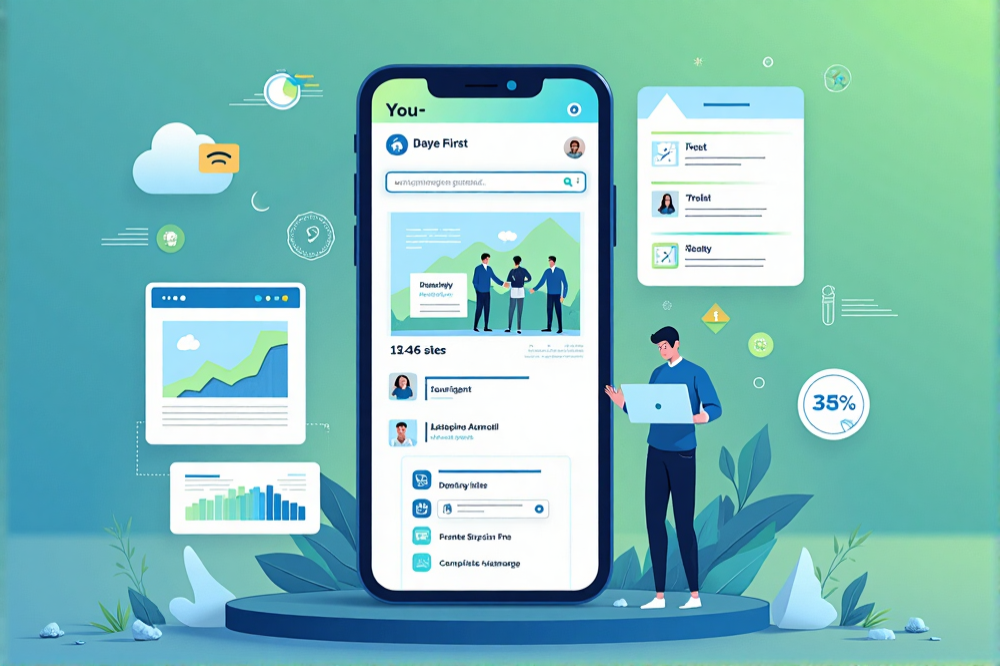
The digital landscape has evolved dramatically over the years, and as we step into 2025, mobile-first web design is no longer optional—it’s a necessity. With the majority of internet traffic originating from mobile devices, businesses must prioritize mobile-friendly experiences to remain competitive. But what exactly does mobile-first web design entail, and why is it so crucial? Let’s explore.
According to recent statistics, mobile devices account for over 60% of global web traffic. Consumers use smartphones not only for browsing but also for shopping, booking services, and consuming content. A mobile-first design ensures these users have seamless access to your website, regardless of device.
Google’s algorithm prioritizes mobile-friendly websites through its mobile-first indexing approach. If your site isn’t optimized for mobile, it risks losing visibility in search engine results, which can significantly impact your organic traffic.
Mobile-first design focuses on simplicity and efficiency. By designing for smaller screens first, you ensure the most critical elements of your site are easily accessible, leading to improved user satisfaction.
Responsive web design remains a cornerstone of mobile-first strategy. Websites need to adapt seamlessly to different screen sizes, orientations, and resolutions to ensure usability.
As users navigate via touch screens, mobile-first designs must incorporate larger buttons, intuitive gestures, and minimal reliance on keyboard input to enhance usability.
PWAs combine the best of web and app experiences. They load quickly, even on slow networks, and offer offline functionality, making them ideal for mobile-first strategies.
Simplified navigation, such as hamburger menus and sticky headers, ensures users can access essential information effortlessly without overwhelming the interface.
With the rise of voice assistants, optimizing for voice search by incorporating conversational keywords and streamlined content has become a best practice.
Airbnb’s mobile-first approach transformed its user experience. By prioritizing mobile optimization, they streamlined booking processes, enhanced search functionality, and increased their conversion rates.
Starbucks’ mobile app and website exemplify the benefits of mobile-first design. Features like order-ahead and personalized recommendations drive user engagement and repeat purchases.
Amazon’s mobile-first design strategy ensures fast load times, intuitive navigation, and a seamless shopping experience, contributing to their e-commerce dominance.
Focus on essential content and ensure it’s displayed prominently on smaller screens. Secondary elements can be added for larger screens to enhance the desktop experience.
Mobile users expect fast-loading pages. Compress images, leverage browser caching, and use a content delivery network (CDN) to enhance site performance.
Thoroughly test your website on various devices and screen sizes to identify and resolve usability issues.
Incorporate mobile-specific functionalities such as click-to-call buttons, geolocation services, and mobile payment integrations to improve usability.
Mobile-first designs are intuitive and user-friendly, encouraging visitors to spend more time on your site.
By simplifying navigation and optimizing calls-to-action, mobile-first designs make it easier for users to complete desired actions, such as purchasing a product or signing up for a newsletter.
A seamless mobile experience reflects positively on your brand, building trust and fostering loyalty among customers.
In 2025, mobile-first web design is more than a trend; it’s a strategic imperative. Businesses that embrace this approach position themselves to capture the attention and loyalty of a predominantly mobile audience. By prioritizing user experience, optimizing for search engines, and leveraging the latest design trends, you can ensure your website remains relevant and competitive in the digital age.
Ready to take your online presence to the next level? Adopting a mobile-first strategy could be the game-changer your business needs.